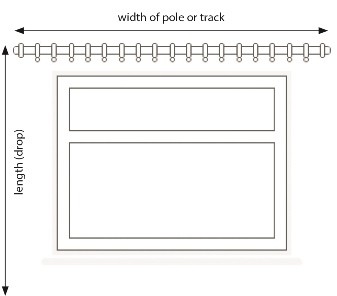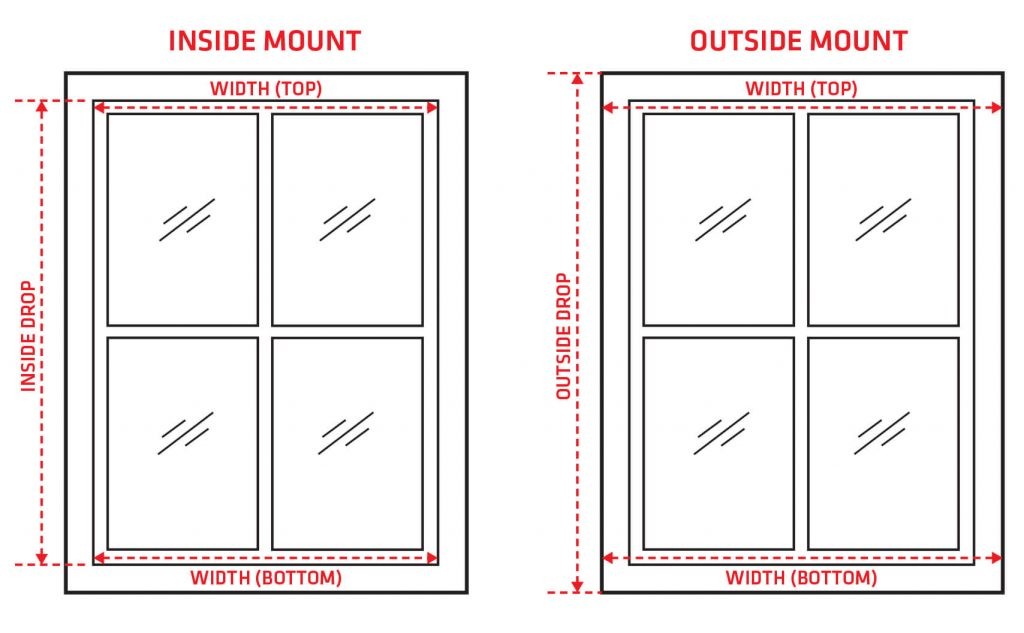Quick guide to
Measuring
Curtains
For the purpose of ordering curtains through our site, you will be asked to give us 2 measurements. It is best to use a metal measuring tape. Do not try using a plastic ruler or a soft measuring tape. Take a note of your measurements in mm and when entering them be sure to add a zero.
Width
- If there is an existing track or pole, measure from one side to the other (on the inside of any finials or end caps etc.
- If there are no tracks up and you plan to start fresh – Ideally you need to take the width of the window opening and add anything from 25/30cm each side.
- It is best to keep the overlap equal on either side.
Lenght
- Again if the track has already been installed, then use this as your guide.
- Usually, tracks are installed anywhere from 25 – 30cm above the top of the window frame to just under the cornice. If measuring an existing track, take the measurement from the top of the track to the floor.
- This deduction will be done by the workshop.
- If you have a rod with rings, measure from the eye of the ring where the hook will go. For eyelet curtains you need to measure from the top of the rod to the floor.
- If you are having and difficulties measuring send us an email with your questions.


Blinds
For the purpose of ordering blinds through our site, you will be asked to give us 2 measurements. It is best to use a metal measuring tape. Do not try using a plastic ruler or a soft measuring tape. Take a note of your measurements in mm.
Inside Fit / Top Fix
Inside mount window treatments are installed inside the window frame or casing – they provide a sleek, clean look which can showcase your window size and moldings. If you’re interested in measuring for inside mount blinds, follow these steps:
- Measure the depth of your window frame. You’ll need this measurement to ensure your window recess meets the minimum depth requirement for an inside mount.
- Measure the width of your window at the top, middle, and bottom of your window opening and circle the narrowest measurement of the three – this will be the number you submit for your window’s width. For roller blinds record the width at the top of the window only.
- Measure the height of your window opening in three places: left, center, and right. Use the smallest measurement if you’re measuring for plaswood venetians blinds, vertical blinds, solar shades, or roller shades. For all other blinds and shades, use the longest measurement.
- Order at the exact opening size with no deductions. The factory will take deductions in production.
- Double check that your measurements follow the width by height format (W x H).
Outside Fit / Face Fix
Outside mount window treatments are mounted on the window molding, wall, or ceiling above your window. Outside mount blinds or shades can make your windows appear wider and longer while also providing better light control and privacy options. You may be required to install an outside mount if your windows do not have sufficient mounting depth. Follow these simple steps to measure your windows for an outside mount window treatment:
- Measure above the window first to make sure you have at least 75mm of flat space on the molding or wall.
- Next, measure the width you want covered. We recommend at least 100mm of overlap on each side of the window for blinds. The extra width provides more privacy and light blockage.
- Determine the location of the headrail – or top – of the window treatment. This could be installed on the window molding (if there is enough flat surface) or wall.
- Measure the height of each window from the mark you just made to where you want the bottom of your window treatment to rest. Consider if you want your window treatment to extend to the sill or lower. If you have a protruding window sill, it is recommended that it be your bottom placement.
- Be aware of obstructions such as doorknobs or molding. If you have obstructions, spacer blocks or extension brackets are available to help your blind or shade extend far enough to avoid protrusions.
- Do not take deductions from your measurements.
- Double check that your measurements follow the width by height format (W x H).
